#house of trastamara
Text





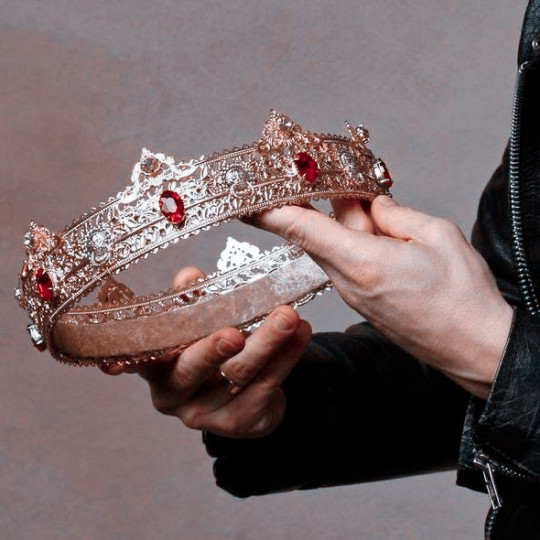

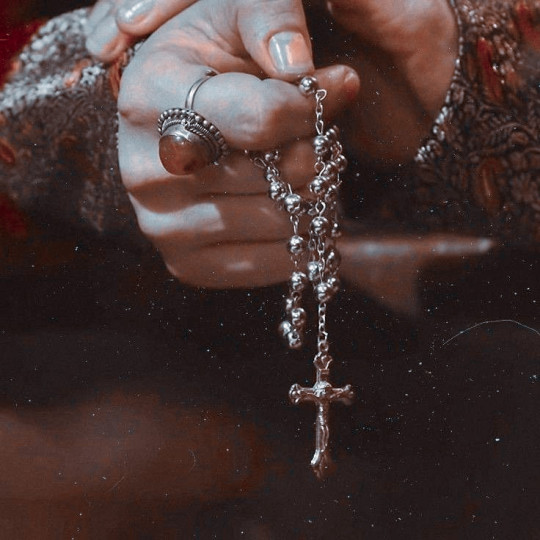
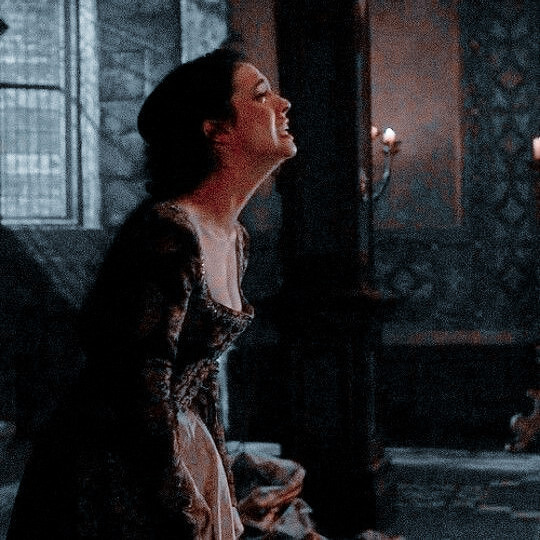
– juana i de trastámara ; infanta of spain, duchess consort of burgundy, queen of castile, aragon, valencia, mallorca, navarre, naples, sicily, sardinia and countess of barcelona was born on this day, 6th of november of 1479
#juana i de castilla#joanna of castile#juana the mad#house of trastamara#spanish history#on this day in history#weloveperiddrama#women in history#perioddramaedit#isabel tve#la corona partida#irene escolar#myedit*
56 notes
·
View notes
Text

Fernando de Aragón e Isabel de Castilla. Unknown artist.
#monarquía española#reino de españa#casa de trastámara#royal couple#tanto monta#monta tanto#tanto monta monta tanto isabel como fernando#reino de castilla#isabel la católica#reina de castilla#reino de aragón#rey de aragón#kingdom of spain#house of trastamara
9 notes
·
View notes
Text
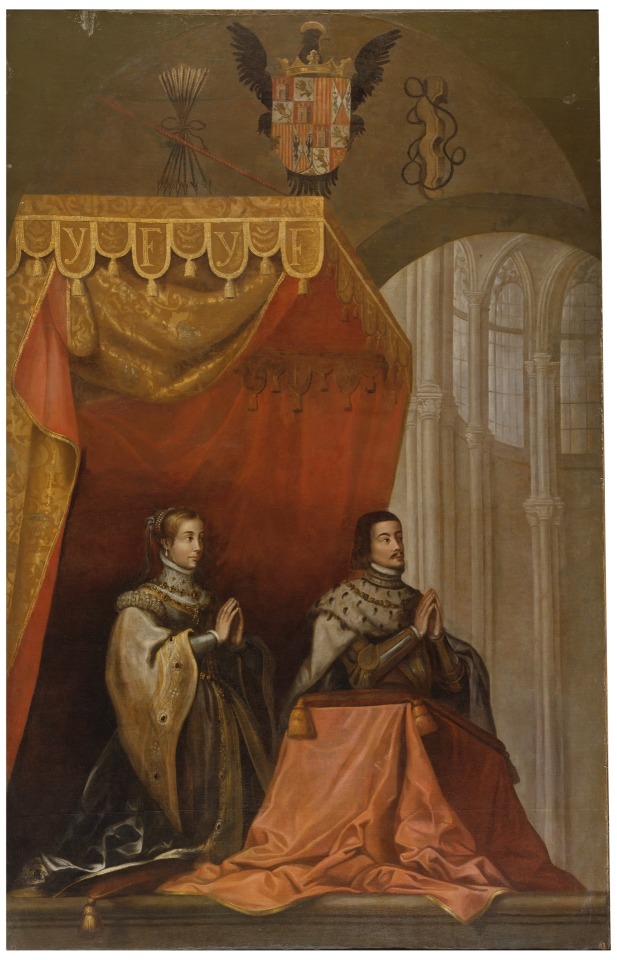
Los Reyes Católicos bajo un dosel. Anónimo, siglo XVII.
#museo del prado#monarquía española#reino de españa#reyes de españa#reyes de castilla#reyes de aragón#isabel la católica#reina de españa#fernando de aragón#fernando ii de aragón#fernando el católico#reyes católicos#casa de trastámara#kingdom of spain#house of trastamara
7 notes
·
View notes
Photo



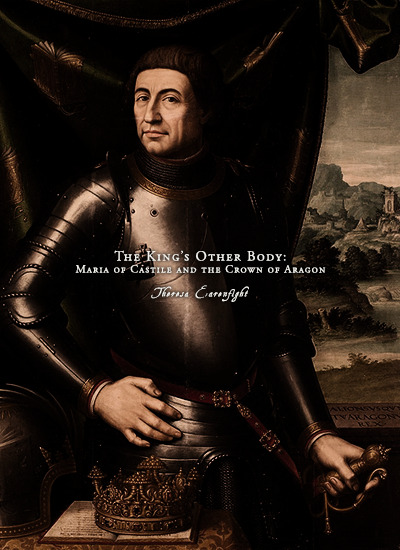


Favorite History Books || The King’s Other Body: María of Castile and the Crown of Aragon by Theresa Earenfight ★★★★☆
Queen María of Castile, wife of Alfonso V “the Magnanimous,” king of the Crown of Aragon (1416– 58), governed Catalunya from 1420 to 1423 and again from 1432 to 1453 while her husband was occupied with the conquest and governance of the kingdom of Naples. For twenty-six years she had control over the provincial governors, prelates and religious orders, the nobility, the army, the municipal government, and all other subjects regardless of legal status. She could grant constitutions and make laws in accordance with royal authority and could sign letters in her own hand according to her own conscience. She was empowered to carry out justice, both civil and criminal, and to name judges and delegates. Assisted by a royal council separate from the king’s, she had full royal authority in Catalunya.
Such legitimately sanctioned political authority in the hands of a queen is remarkable because María governed Catalunya not as queen in her own right, or even as queen-regent, but rather as lieutenant general (lloctinent general). In the privilegios that named María lieutenant, Alfonso clearly stated that her powers as lieutenant should be equivalent to his own as king, referring to her as his alter nos. María was clearly more than just a wife offering advice: She held the highest political office in the most important of Alfonso’s Iberian realms and, in political terms, was second only to the king himself. For a medieval queen, this combination of exalted royal status plus official political appointment was not common and may not have existed outside the realms of the Crown of Aragon. But in the Crown a unique contractual form of kingship and government had developed that relied heavily on delegated authority to rule the far-flung constituent territories in the Mediterranean. Established in the thirteenth century, the lieutenancy was both an ad hoc adjunct to the king and a training ground for princes to rule one or more of the constituent realms of the Aragonese crown. The institution was the by-product of innovation brought on by rapid territorial acquisition during the thirteenth and fourteenth centuries— encompassing the kingdom of Aragón, the county of Catalunya, the Balearic Islands (Mallorca, Menorca, and Ibiza), Valencia, Sardinia, and Corsica— that stretched across the western Mediterranean. This widely dispersed geography forced the kings to travel frequently and delegate authority normally reserved to the king to their wives, sons, and brothers. As an official form of co-rulership it is, to my knowledge, unique.
… This bare outline of her reign tells us much about rulership in the Crown of Aragon in the later Middle Ages. But more broadly it makes a compelling argument for a reformulation of our understanding of the place of queenship in the institution of monarchy. María of Castile, and an Aragonese queen-lieutenant in general, may be unfamiliar to most scholars of the Middle Ages, and she may seem anomalous and her experience ungeneralizable to the rest of Europe, but her case exposes the limitations of current explanatory models of queenship. She did not rule in her own right, so comparisons with female rulers like Urraca of Leon-Castile, Isabel of Castile, and Juana of Castile are misleading. Even though she married an Aragonese prince and derived her office as queen-lieutenant from her marriage, she does not fit the typologies that analyze queenly power in the context of marriage and motherhood— queen-consort, queen-mother, queen-regent, and queen-dowager. She had no children and thus could not be queen-regent for them in their minorities and could not exercise a queen-mother’s privilege to act as diplomat when arranging the marriages of her children and grandchildren. She could she serve as queen-dowager because she died a few months after Alfonso and his brother succeeded him immediately. María’s reign typifies the idiosyncratic character of the office of queenship, poised ambiguously between family and bureaucracy.
#historyedit#litedit#maria of castile#medieval#spanish history#house of trastamara#european history#women's history#history#nanshe's graphics#history books
44 notes
·
View notes
Text







A guide through the monarchs of Aragon in La Catedral del mar & Los Herederos de la tierra
@asongofstarkandtargaryen
During the series the role of the members of the monarchy is secondary, but they are used to help to establish a concrete historical context and they're very determinant in the situation of the Puig and Entanyol families involving political estrategies of supporting this or that king, that gave them benefits or dacay (Arnau's rise with Pedro IV, Genís & Roger rise with Juan I and Martín I and Bernat with Fernando I). So, I wanted to make a recopilation of the monarchs shown during these series and their families.
House of Aragon/ House of Barcelona (descendants of the Jimena dinasty)
The Jimena dinasty is called like that because its origin was Jimeno "the Strong", grandfather of Eneko Arizta, and one of its branches was the Arista-Iñiga dinasty started by Eneko.
Eneko, his son García Iñiguez and his grandson Fortún Garcés were Lords of Pamplona, Fortún Garcés married Awriya bint Lubb ibn Musa (great-grandaughter of Musa the Great), and one of their daughters was Oneka Fortúnez, who married Abd Allah I of Cordoba (their son was Muhammad, who fathered the calipha Abd al-Rahman III with a basque woman called Muzna) and then Oneka married Aznar Sánchez de Larraún, and had a daughter with him, Toda Aznárez. Toda married Sancho Garcés I, the truly first king of Pamplona, was Sancho Garcés I (the first king of the Jimena dinasty).
Sancho Garcés III (992-1036) was king of Pamplona, Count of Aragon and king consort of Castile, whose bastard son with Sancha de Aibar, Ramiro I, inherited the counties of Aragon, Sobarbe and Ribagorza, and united them to form the kingdom of Aragon.
Then Petronila I (1136-1173), Ramiro I's great-grandaughter, married Ramón Berenguer IV count of Barcelona. Their son Alfonso II of Aragon was the first king of the Crown of Aragon and Pedro IV's great-great- great-grandfather.
In summary all the Aragonese monarchs are descedants of Eneko Arizta (and that's the way we can link Irati with LCDM/LHDLT)
Pedro IV
Pedro IV of Aragon, II of Valencia and I of Mallorca (Balaguer, Lleida, Catalonia, September 5, 1319 - Barcelona, Catalonia, January 5, 1387), called "the Ceremonious" or the Punyalet ('the one with the dagger', due to a dagger he used to carry), son of Alfonso IV of Aragon and Teresa de Entenza.
King of Aragon, Valencia and Mallorca (1344-1387); Duke of Athens (1380-1387) and Neopatria (1377-1387); count of Barcelona (1336-1387) and of Ampurias (1386-1387).
In 1338 he married María de Navarra (1326-1347), daughter of Felipe III and Juana II of Navarra. Offspring:
Constanza (1343-1363), married in 1361 to Federico III of Sicily, and Juana (1344-1385), married in 1373 with Juan I de Ampurias.
In 1347 he married Leonor of Portugal (1328-1348), daughter of Alfonso IV of Portugal. She died the following year of the Black Death.
In 1349 he married Eleanor of Sicily (1325-1375), daughter of Pedro II of Sicily. Offspring:
Juan I (1350-1396), Martin I (1356-1410) and Leonor (1358-1382), married to Juan I of Castile. Leonor was the mother of Fernando I of Aragon.
In 1377 he married Sibila de Fortiá, daughter of the Empordà nobleman Berenguer de Fortiá. Offspring:
Isabel (1380–1424), who married Jaime II of Urgel, future suitor for the aragonese crown.
During his reign the Aragonese expansionism in the Mediterranean continued, focused on southern Italy and Greece.
Although he was ally of Alfonso XI, Pedro IV had a great rivalry with his son Pedro I of Castile and fought against him in some conflicts, like the War of the two Pedros (1356-1369) and the first Castilian Civil War (1351-1369), in which Pedro I was supported by Pedro I of Portugal (one of his bastard sons, Juan I of Portugal, was the founder and first king of the Avis dinasty) and Muhammad V of Granada, and Pedro IV supported the bastard children of Alfonso XI with his lover Leonor de Guzmán (Pedro de Aguilar, Sancho Alfonso, Fadrique Alfonso, Enrique II of Castile, Fernando Alfonso, Tello, Juan Alfonso, Juana Alfonso, Sancho and Pedro Alfonso), who started several revolts against Pedro I of Castile. The wars ended when Enrique killed Pedro I, and he became the first king of Castile of the Trastamara dinasty.
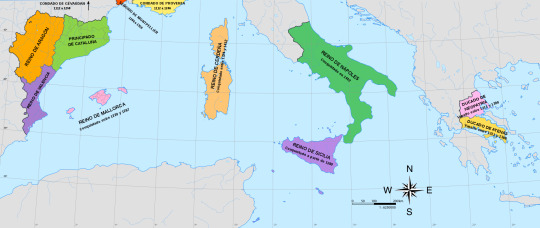
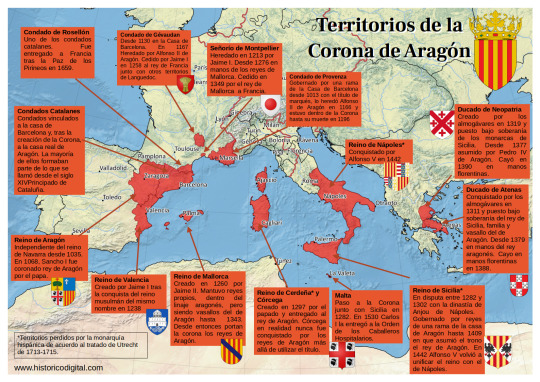
Sibila de Fortiá
Sibila de Fortiá (Fortiá, Girona, Catalonia, 1350 - Barcelona, Catalonia, 1406), queen consort of the Crown of Aragon (1377-1387). She was the daughter of Berenguer de Fortiá and his wife Francesca de Vilamarí. In 1371 she married for the first time Artal de Foces, an Aragonese nobleman, whom she widowed in 1374, and then she the lover of Pedro IV and had a daughter with him, Isabel.Pedro and Sibila married in 1377. After the wedding, Pedro surrounded himself with Empordà nobles as well as Sibila's relatives.
Pedro IV was very ill at the end of the year 1386, and Sibila, fearful of the wrath of the future King Juan, fled to the castle of San Martín de Sarroca (Barcelona), which belonged to her brother Bernat de Fortiá. There she was imprisoned by Juan I, who treated her harshly, accusing her of abandoning the king on his deathbed and of several robberies in the palace. She was confined in the castle of Moncada (Barcelona) until she renounced his property granted by the king. Finally, Sibila retired to the convent of San Francisco in Barcelona, where she died in 1406.
Juan I
Juan I of Aragon, called the Hunter or the Lover of All Kindness (Perpignan, Occitania, France, 1350 - Torroella de Montgrí, Girona, Catalonia, 1396), King of Aragon, Valencia, Mallorca, Sardinia and Corsica, and Count of Barcelona, Roussillon and Cerdanya ( 1387-1396). Son of Pedro IV and Leonor of Sicily.
His first marriage was with Marta de Armagnac (1347-1378), daughter of Count Juan I de Armagnac. With whom he had: Jaime (1374), Juana, (1375-1407) who married Mateo, Count of Foix. After the death of her father, she claimed the throne with her husband, but they were defeated; Juan (1376), Alfonso (1377) and Leonor (1378).
Widowed, Juan married Violante de Bar (1365-1431), daughter of Robert I, Duke of Bar. Offspring:
Jaime Duke of Girona (1382-1388), Yolanda, who married Louis II of Anjou, titular king of Naples. Their son, Luis III, claimed the throne after the death of Martín I, in the engagement of Caspe; Fernando Duke of Girona (1389), Antonia (1391-1392), Juan Duke of Girona (1392-1396), Eleanor (1393), Pedro Duke of Girona (1394) and Juan (1396)
Martin I
Martin I of Aragon, also called the Human or the Old (Girona, July 29, 1356-Barcelona, May 31, 1410), was king of Aragon, of Valencia, of Majorca, of Sardinia and count of Barcelona (1396-1420) and king of Sicily (1409-1410). Second son of Pedro IV of Aragon and his third wife Leonor of Sicily.
Martín was called "the Human" because of his great passion for the Humanities and books. The library of Martín I is the first that could be considered from Renaissance, if at that time in the history of the Iberian peninsula the term can already be used.
Martin married in 1372 with Maria de Luna, daughter of Lope, the first count of Luna, in 1374. From this union they were born:
Jaime (1378), Juan (1380) and Margarita (1388) and Martin I of Sicily "the Younger" (1376-1409), first husband of Blanca I of Navarra.
When Martin the Younger died, Martin married Margarita de Frades, although they left no issue.
His entire reign was marked by the Western Schism that divided Christianity since 1378. He was a supporter of the popes of Avignon (where he went the year of his coronation to swear allegiance to Benedict XIII "the Pope Luna", Pedro Martínez de Luna y Pérez de Gotor, with whom it seems that he came to establish a friendly relationship ), from whom he obtained support in his claims over the kingdom of Sicily against the Anjou, supporters of the popes of Rome. In 1400, he would marry his niece Yolanda to Louis II of Anjou in order to defuse tensions. He met in Avignon with the antipope Benedict XIII, Aragonese and a relative of the queen, with the intention of reaching a solution to the schism and, later, in 1403 he intervened militarily against the siege that Benedict suffered in his papal seat, rescuing him and welcoming him in Peñíscola .
House of Trastamara (the Aragonese branch)
Fernando I
Ferdinand I of Aragon (Medina del Campo, Valladolid, Castile and Leon, November 27, 1380-Igualada, April 2, 1416), also called Fernando de Trastámara and Fernando de Antequera, the Just and the Honest, was an infant of Castile, king of Aragon, Valencia, Mallorca, Sardinia, Count of Barcelona (1412-1416), and regent of Castile (1406-1415), during the minority of Juan II of Castile. Son of Juan I of Castile and Leonor of Aragon.
He was the first Aragonese monarch of the Castilian dynasty of the Trastámara, although he was of Aragonese origin on his mother's side.
He married Leonor de Alburquerque
Alfonso the Magnanimous (Medina del Campo, 1394-1458), king of Aragon, with the name of Alfonso V, and of Naples and Sicily, with the name of Alfonso I.
María de Aragón (Medina del Campo, 1396-1445), first wife of Juan II of Castile and mother of Enrique V of Castile
Juan II (Medina del Campo, 1397-1479), King of Aragon and King consort of Navarre.
Enrique (1400-Calatayud, 1445), II Duke of Villena, III Count of Alburquerque, Count of Ampurias, Grand Master of the Order of Santiago.
Leonor (1402-1445), who married Eduardo I of Portugal. Mother of Alfonso V of Portugal, Juana of Portugal (Enrique IV's second wife) and Leonor of Portugal, who married Frederick III of Habsburg (they were parents of emperor Maximilian I of Austria)
Pedro (1406-1438), IV Count of Alburquerque, Duke of Noto.
Sancho (1400-1416)
Alfonso V
Alfonso V of Aragon (Medina del Campo, 1396 – Naples, June 27, 1458), also called the Wise or the Magnanimous, king of Aragon, of Valencia, of Majorca, of Sicily, of Sardinia and Count of Barcelona (1426-1458); and King of Naples (1446-1458).
Alfonso V can be considered as a genuine prince of the Renaissance, since he developed an important cultural and literary patronage that earned him the nickname of the Wise and that would make Naples the main focus of the entry of Renaissance humanism in the sphere of the Crown of Aragon.
From his relationship with his lover Giraldona de Carlino, a napolitan noblewoman, he had three children:
Fernando (1423-1494), his successor in the kingdom of Naples under the name Fernando I.
Maria (1425-1449), married to Lionel, Marquis of Este and Duke of Ferrara.
Leonor, or Diana Eleonora (?-1450), married the nobleman Marino Marzano, Prince of Rossano.
Maria of Castile
María of Castile (Segovia, Castile and Leon, November 14, 1401-Valencia, October 4, 1458). Infanta of Castile, Princess of Asturias (1402-1405) and Queen of Aragon (1416-1458) for her marriage to Alfonso the Magnanimous. First daughter of Enrique III "the Mourner" and Catherine of Lancaster. Sister of Juan II of Castile, untie of Enrique IV and Isabel I.
The marriage between María and Alfonso is celebrated in the Cathedral of Valencia on October 12, 1415. The ceremony was officiated by the antipope Benedict XIII, who also granted the matrimonial dispensation for the wedding.
In 1420, when the king left for Naples for the first time, he left the government of his kingdoms in the hands of Maria as lieutenant general. The absence of the Magnanimous would last three years, during which María had to face the rapid deterioration of the economic situation in Catalonia, the territorial struggle with the Castilian Crown, as well as the conflicts of a social nature that shook her in different kingdoms. On his return to Aragon in 1423, Alfonso V began the war with Castile, along with his brother King Juan of Navarra. But her financial resources were exhausted and in 1429 Queen María had to act as a mediator between her husband and her brother, King Juan II of Castile, to put an end to the dispute. However, Alfonso's situation did not improve, due to the recession suffered by the Catalan economy and the social conflicts caused by it. The Courts of Barcelona in 1431 demanded from the king a series of measures to correct the enormous deficit of the Catalan treasury and trade. But Alfonso, fed up with these matters, returned to Italy and gave full powers to the queen as ruler of Aragon; he left the Iberian Peninsula forever on May 29, 1432. This marked Alfonso V's final break with the Crown of Aragon, which, however, he never renounced.
+ Bonus track (although he doesn't appear in this series)
Juan II
Juan II of Aragon and Navarra, the Great, or the Faithless according to the Catalan rebels who rose up against him (Medina del Campo, June 29, 1398-Barcelona, January 20, 1479) was Duke of Peñafiel, King of Navarre (1425-1479), King of Sicily (1458-1468) and King of Aragon, Mallorca, Valencia, Sardinia (1458-1479) and Count of Barcelona, son of Ferdinand I of Aragon and Leonor de Albuquerque.
From his first marriage to Blanca I of Navarra (daughter of Leonor of Castile and Carlos III of Navarra):
Carlos (1421-1461), Prince of Viana and Girona, Duke of Gandia and Montblanch, titular King of Navarra as Carlos IV (1441–1461), married Agnes of Cleves. He wrote the 'Chronicles of the Monarchs of Navarra', about the history of his antecessors, from Eneko Arizta in the 8th century up to the 15th century.
Juan (1423-1425)
Blanca of Navarra (1424-1464), first wife of Enrique IV of Castile
Leonor (1425-1479), married to Gastón IV de Foix, Queen of Navarre under the name of Leonor I.
From his second marriage to Juana Enríquez:
Leonor of Aragon (1448)
Fernando II (1452-1516), king iure uxoris of Castile (1474-1504) and then regent between 1507 and 1516, under the name of Fernando V due to his marriage to Isabel I, king of Sicily (as Fernando II, 1468-1516), Aragon and Sardinia (as Fernando II, 1479-1516), Naples (as Fernando III, 1504-1516), and from Navarra (as Fernando I, 1512-1516)
Juana (1455-1517), second wife of Fernando I of Naples. Her daughter Juana married Fernando II of Naples (Fernando I of Naples' grandson)
During his youth, Juan fought in the Castilian-Aragonese war (1429-30) and the Castilian Civil War (1437-1445) in the Aragonese team against Juan II of Castile, his son Enrique and the Constable Álvaro de Luna (favourite of Juan II), due to the Aragonese political influences in Castile and the full control that Álvaro de Luna had over Juan II of Castile that allowed him to become very powerful, so some members of the Castilian nobility wanted to remove Álvaro out of Juan II side because of that, and the Aragonese reacted to the anti-aragonese convictons of Álvaro.
Álvaro de Luna arranged a new marriage between Juan II of Castile and Isabel of Portugal (mother of Isabel I) in 1447. The constable intended with this dynastic alliance to strengthen the political ties that united Castile and Portugal against the common enemy: the Catalan-Aragonese Crown, but from 1449, Isabella of Portugal indirectly supported the maneuvers of the Great League of Nobles (allies of the Aragonese) formed against the constable. But it would not be until 1453 when Juan II of Castile, possibly tired of the continuous pressure from the aristocracy, left Álvaro on his own. It has often been said that it was the queen herself who demanded that her husband signed the prison order against Álvaro, through Juan Pacheco, Marquis of Villena.
By 1441 Blanca I de Navarra died and Juan II married the daughter of Fadrique Enríquez (one of his Castilian allies, the admiral of Castile), Juana Enríquez y Fernández de Córdoba.
After the death of Blanca I, a dispute between Juan II and Carlos de Viana about the sucession for the Navarrese throne. Juan was king Iure uxoris of Navarre and wanted to be keep his position as king, but Carlos and his supporters claimed that the prince was the rightful king as firstborn son of the queen and in 1451 the Navarrese civil war started.
In the following years the tension between Juan and Carlos increased with the birth of Fernando, who was pushed by his mother Juana to be the heir of Aragon and Navarra, which Juan later accepted. This change in the sucession was not accepted in Catalonia, that supported Carlos de Viana birthrights, and they started a rebellion against Juan II.
Other supporter of Carlos was Enrique IV, who offered his sister Isabel to Carlos in marriage as a sign of their alliance, but the wedding never happened.
Carlos died in 1461, although the war didn't ended because the Catalan nobility proposed other suitors for the Crown of Aragon and the Principality of Catalonia, like Enrique IV, Pedro of Portugal (grandson of Jaime II of Urgell) and Renato de Anjou during the Catalan civil war, that ended in 1472.
It's interesting that the interesting that the current situation of the Estanyol family at the end of Los Herederos de la tierra is that there are two brothers from different mothers, and whose father have benefited one of them over the other, so it may lead to tensions from the part that was not benefited, Arnau Jr is the main heir in Bernat's will, so maybe in the future Marta Destorrent will try to pit her son Baltasar against his elder brother to take Arnau Jr's place. By period of time I find very likely that this happens during the reigns Maria of Castile and Juan II, and the situation of the Estanyol succession could parallel the Carlos de Viana-Fernando II problem, although in this case the younger son was the benefited one and the one who inherited his father's kingdoms and maybe the Estanyols are part of the Catalan nobility that defended Carlos' birthrights, although some other Catalan nobles supported Juan II & Fernando alongside of peasants and smallfolk, during the First Remensa War during the Catalan civil war.
The Remensa War consisted in revolts organised by peasants who wanted to end the servitude to which their feudal lords had subjected them, so I think that probably the Estanyol-Llor family would support the peasants because of their backgrounds.
#la catedral del mar#los herederos de la tierra#the cathedral of the sea#heirs to the land#history#crown of aragon#aragonese monarchs#pedro iv de aragón#juan i de aragón#martín i de aragón#sibila de fortiá#fernando i de aragón#alfonso v de aragón#maria de castilla#juan ii de aragón#gifs#period dramas#house of aragon#house of trastamara#house of barcelona#long post
21 notes
·
View notes
Photo

Sancha of Aragon (1478 in Gaeta – 1506 in Naples), or Sancia of Aragon, was an illegitimate daughter of King Alfonso II of Naples and his mistress Trogia Gazzela. In 1494, she was married to Gioffre Borgia, youngest son of Pope Alexander VI. Upon her marriage, she and her husband were created Prince and Princess of Squillace, a province in the south of Italy. For the majority of their marriage, Sancha and her husband lived in the Vatican with the rest of his family. There Sancha became friends with her sister-in-law Lucrezia, and allegedly had affairs with both of her husband's older brothers: Juan Borgia, 2nd Duke of Gandia, also known as Giovanni Borgia, and Cesare Borgia. Her affair with Juan is sometimes said to be the reason for Cesare's alleged murder of Juan in 1497.
Sancha's brother, Alfonso of Aragon, married Lucrezia Borgia. Sancha's life among the Borgias became a turbulent one after Cesare made an advantageous marriage with a French princess, Charlotte d'Albret, in order to secure French support for his military campaigns. This put Cesare's interests in direct conflict with those of the Italian states. Sancha's home city of Naples was no exception, and it had long been nervous about militant French interests.
It is rumored that Alfonso was brutally murdered in 1500 by Cesare, due to interests with France against Naples. Sancha, now a political embarrassment, was imprisoned in the Castel Sant'Angelo in Rome until the death of Pope Alexander in 1503. Upon his death, she managed to regain her freedom and returned to Naples with her young nephew, Rodrigo, whom she raised as her own. She never lived with her husband, Gioffre, again. Cesare visited her not long after and asked if she would take on the care of Giovanni "The Roman Infant", possibly Lucrezia's illegitimate child, but probably the illegitimate child of Pope Alexander VI, which she agreed to do. She died of an undisclosed illness in 1506, a year before Cesare's own death.
5 notes
·
View notes
Text
Minor Women in The Witcher 3:
Note: this is not the full list of every woman found in-game, however a list of many minor woman that do appear.
• Anabelle - Plague maiden from Fyke Island. In love with a local fisherman (Graham) but her father (Lord of Velen) disapproved. During a Nilfgaardian invasion, fled to Fyke Island to hide in a mage tower with her family. Took a paralysis potion to protect herself from assault when peasants stormed the tower, however when she woke she was unable to move, everyone else was dead, and rats descended on them, hence her ghost from a grisly death.
• Anna Strenger - Wife of the Bloody Baron, mother of Tamara Strenger. Fled from the Baron, his drunken rages and beatings, with her daughter. The Crones placed a curse on her which turned her into a monster after making a pact with them to abort her pregnancy, and she is dragged into Crookback Bog to repay her debt.
• Anisse - Young Aretuza graduate.
• Aynara - orphan found in Crookback Bog.
• Bea - Barmaid in Novigrad, non-human sympathiser and a friend of Ciri.
• Bergthora - Wife of Eiric in Skellige.
• Birna Bran - Widow of the King of Skellige, engaged in a conspiracy that ends in a massacre at Kaer Trolde due to her disdain with customs and wish to establish a hereditary rulership.
• Carthia van Canten (Cantarella/Sasha) - Head of Nilfgaardian Secret Service.
• Catarina - Actor in the Foxen.
• Corinne Tilly - Oneiromancer (deciphering the past and present in dreams).
• Dolores Reardon - Old woman, ran away from her Temerian wealthy family with her lover.
• Dora - young woman harassed by thugs who Geralt walks home (even though she can take care of herself).
• Edna var Attre - Daughter of a Nilfgaardian ambassador, twin sister to Rosa.
• Elsa - Innkeeper in White Orchard.
• Eveline Gallo - Circus acrobat, accomplished thief and an elf.
• Felicia Cori - Young aspiring sorceress, former Philippa pupil, burned by the Church of the Eternal Fire.
• Gretka - Girl which Ciri saves from wolves in Velen.
• Ingrid Vegelbud - Daughter of Patricia Vegelbud.
• Irina Renarde - Leader of the Foxen (Mummers troupe), an actor.
• Jacquette - Young woman who is engaged to a knight errant of Toussaint.
• Jonna - Alchemist in Rannvaig.
• Josta - Priestess of Freya.
• Jutta an Dimun - Shield maiden on Faroe, clan Dimun.
• Karli - Mother of two sons killed by a dragon in Fyresdal.
• Kurisu - Kidnapped by pirates, escapes and is found around Freyas Temple.
• Lena - Young woman attacked by a griffin while sneaking out to meet her Nilfgaardian lover.
• Liesje - Farmer and wife in White Orchard.
• Marabella - Teacher in Novigrad, poet and fond of horses.
• Margrit (Margaret) - Sister of Niellen's missing wife.
• Maria Louisa La Valette - Foltests mistress. A baroness, has two illegitimate children by Foltest.
• Marlene de Trastamara - Noble woman who turns away the wrong beggar and is cursed.
• Marquise Serenity - Madame at the Passiflora.
• Matilda de Vermentino - Owner of the Vermentino vineyard.
• Molly - Maid or noblewoman, depending on previous player choices.
• Nissa - Elven comedienne in The Puffins troupe.
• Patricia Vegelbud - Matriach of the Vegelbud family.
• Pinastri - Lapsed Eighth Day Flagellant, herbalist.
• Polly - Choreogapher in Novigrad. Dandelion used to hide out in her house.
• Rosa var Attre - Daughter of the Nilfgaardian ambassador, twin sister of Edna. Fencer.
• Sara - Godling "haunting" a house in Novigrad.
• Sweet Nettie - Sex worker, potential serial killer victim.
• Tamara Strenger - Witch hunter, daughter of the Bloody Baron. Fled with her mother, and joined the witcher hunters so she would be able to survive trekking into the bog to save her.
• Thecla - Wise woman in the village below Bald Mountain. Seeress.
• Vernossiel - Leader of a small Scoia'tael commando group.
• Viki - Shipwreck survivor, sheltering a young boy in Widows grotto.
• Vivienne de Tabris - Lady in waiting to Anna Henrietta. Cursed to turn into a bird when the moon is out.
20 notes
·
View notes
Text

HOUSE OF TUDOR | Family Tree
(feat. @semperanneboleyn, @boleynsrex, @thunyielding, @felipaed, @lainfanta)
Notable connected families: Boleyn, Brandon-Grey, Habsburg/Trastamara, Stuart
Family motto: Dieu et mon droit (God and my right, royal motto of England)
Family symbols: Red and white Tudor rose
#bd.challenge#edits.#muse.#& william.#& elizabeth.#& anne boleyn.#& felipe.#& catalina.#& henry viii.#& catherine of aragon.#& family.#& philip ii.
9 notes
·
View notes
Text

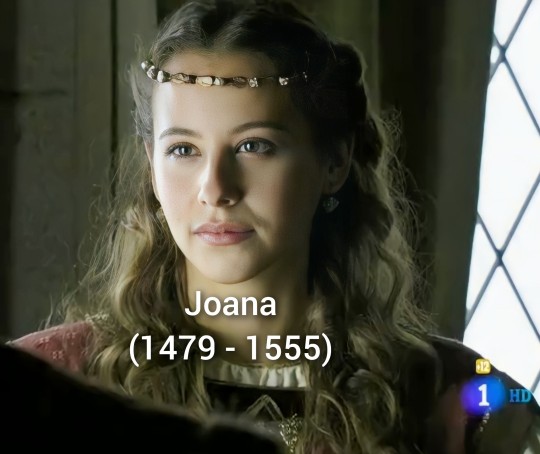


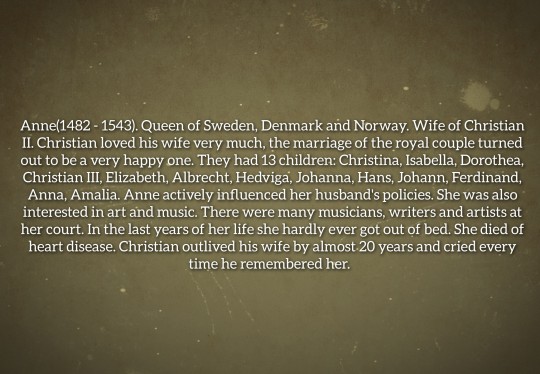
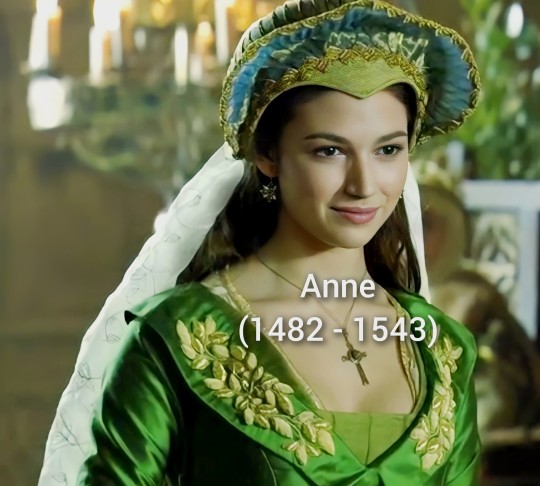



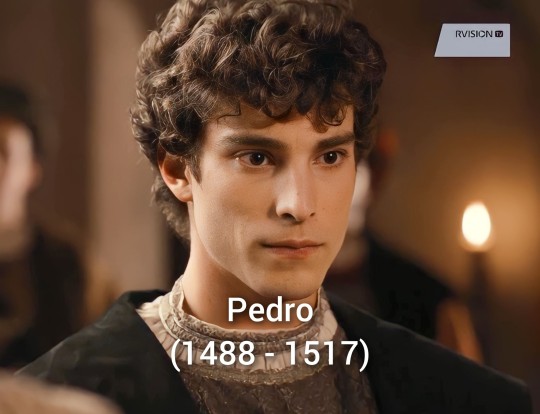
AU House of Trastamara: Children Isabella of Castile and Ferdinand of Aragon.
Joana(1479 - 1555). Duchess of Burgundy. Wife of Philip I of Austria. Mother of 6 children: Eleanor, Charles V, Isabella, Ferdinand, Maria, Catherine. Joana lived a long and interesting life. After the untimely death of her husband, she became regent under her infant son Charles. And after her son became emperor, he made her ruler of the Netherlands. Joana outlived not only her husband, but all of her siblings and even got to see her great-grandchildren. She died surrounded by her children and grandchildren.
Mary(1482 - 1550). Queen of Scots. Wife of James IV. Mary and James IV maintained a warm relationship throughout their marriage. The queen supported her husband in everything, but the king preferred her to his favorite. The marriage produced 7 children: James V, Margaret, Isabella, Matilda, Robert, Anabella and David. After her husband's death, she devoted herself to culture and art.
Anne(1482 - 1543). Queen of Sweden, Denmark and Norway. Wife of Christian II. Christian loved his wife very much, the marriage of the royal couple turned out to be a very happy one. They had 13 children: Christina, Isabella, Dorothea, Christian III, Elizabeth, Albrecht, Hedviga, Johanna, Hans, Johann, Ferdinand, Anne, Amalia. Anne actively influenced her husband's policies. She was also interested in art and music. There were many musicians, writers and artists at her court. In the last years of her life she hardly ever got out of bed. She died of heart disease. Christian outlived his wife by almost 20 years and cried every time he remembered her.
Catherine(1485 - 1543). Queen of England. Wife of Prince Arthur and then his brother Henry VIII. Mother of 6 children: Elizabeth, Henry IX, William, Edmund, Mary, Isabella. The marriage of Henry and Catherine was a happy one. She exerted political influence on her husband. In addition, Catherine paid great attention to the upbringing and education of her children, and she maintained close communication with all her brothers and sisters.
Pedro(1488 - 1517). Grand Master of the Order of Calatrava. Count de Ampurias. Married Henry VIII's sister, Margaret Tudor. Father of 3 children: Jaime, Yolanda, Fadrique. Together with his older brothers took part in military campaigns. He died on the battlefield. After the death of his brother, Alfonso took his wife and his nephews to the palace.
AU: Дети Изабеллы Кастильской и Фердинанда Арагонского.
Хуана(1479 - 1555). Герцогиня Бургундская. Жена Филиппа I Австрийского. Мать 6 детей: Элеонора, Карл V, Изабелла, Фердинанд, Мария, Екатерина. Хуана прожила долгую и интересную жизнь. После скоропостижной смерти своего супруга стала регентом при малолетнем сыне Карле. А после того как её сын стал императором он сделал её правительницей Нидерландов. Хуана пережила не только мужа, но и всех своих братьев и сестёр и даже смогла увидеть своих правнуков. Умерла в окружении детей и внуков.
Мария(1482 - 1550). Королева Шотландии. Жена Якова IV. Между Марией и Яковом IV на протяжении всего брака сохранялись тёплые отношения. Королева во всем поддерживала своего мужа, но король предпочитал ей свою фаворитку. В браке родилось 7 детей: Яков V, Маргарита, Изабелла, Матильда, Роберт, Анабелла, Давид. После смерти мужа она посвятила всю себя культуре и искусству.
Ана(1482 - 1543). Королева Швеции, Дании и Норвегии. Жена Кристиана II. Кристиан очень любил свою жену, брак королевской пары оказался очень счастливым. У них родилось 13 детей: Кристина, Изабелла, Доротея, Кристиан III, Елизавета, Альбрехт, Хедвига, Иоанна, Ганс, Иоганн, Фердинанд, Анна, Амалия. Ана активно влияла на политику своего мужа. А также она интересовалась искусством и музыкой. При её дворе было много музыкантов, писателей и художников. В последние годы жизни она почти не вставала с постели. Умерла от сердечной болезни. Кристиан пережил свою жену почти на 20 лет и каждый раз плакал когда о ней вспоминал.
Екатерина(1485 - 1543). Королева Англии. Жена принца Артура, а затем его брата Генриха VIII. Мать 6 детей: Елизавета, Генрих IX, Уильям, Эдмунд, Мария, Изабелла. Брак Генриха и Екатерины был счастливым. Оказывала политическое влияние на своего мужа. Кроме этого Екатерина уделяла большое внимание воспитанию и образованию своих детей, а также она поддерживала тесное общение со всеми своими братьями и сёстрами.
Педро(1488 - 1517). Великий Магистр ордена Калатравы. Граф де Ампурьяс. Женился на сестре Генриха VIII, Маргарите Тюдор. Отец 3 детей: Хайме, Иоланда, Фадрике. Вместе со старшими братьями принимал участие в военных походах. Погиб на поле боя. После смерти брата Альфонсо забрал его жену и своих племянником во дворец.
Part 2.
#history#history au#spanish#spanish history#royal family#royalty#the tudors#isabella#Isabella of Castile#isabella of portugal#Ferdinand of Aragon#catherine of aragon#Henryviii#15th century#16th century#mary tudor#au#spanish princess#spain#spanish royal family#the spanish princess#spanish royalty#Roy#Royal#Royals
6 notes
·
View notes
Text
So was nobody going to tell me that Queen Mary I and Rory Gilmore apparently have the same Myers-Briggs Type, or was I just supposed to find that out for myself? Because now I feel obligated to draw some Trastamara house/Gilmore Girls mashups.
#rory gilmore#mary i#queen mary i#mary tudor#trastamara#catherine of aragon#isabella of castile#myers briggs#mbti#isfj#isfj personality
3 notes
·
View notes
Text

felicidades, v, y bienvenido a sevilla ! you have been accepted as isabeau de foix, our queen of aragon (claire foy). please be sure to review our guidelines, welcome checklist, and send in your blog within twenty-four hours.
♱ [isabeau de foix – claire foy – 33 – queen of aragon] ♱ bienvenidos ISABEAU DE FOIX. you hail from FRANCE/ARAGON and have been risen to the position of a QUEEN. you are a member of the house of DE FOIX / TRASTAMARA and will go down in history as the THE AWAITING HYDRA. though you are IMPATIENT & CONTENTIOUS, you are blessed with being DESIROUS and PERCEPTIVE. ♱ [v – she/her]
0 notes
Photo
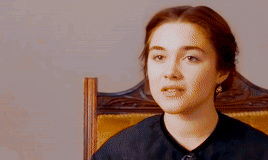
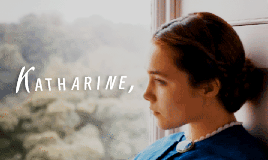
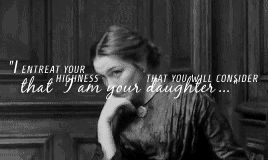





♦ Years between Prince Arthur’s death and her marriage to Henry VIII proved increasingly difficult for Katherine of Aragon. Not only the marriage negotiations dragged on continually, leaving no certainty if the union will ever take place, but there were also financial problems to face due to the lack of understanding between Ferdinand II of Aragon and Henry VII as to the payment of her dowry. Left, almost entirely, to her own devices, Katherine struggled to maintain herself and her household on decent level. It was up to the two kings, of course, to come to terms and improve her circumstances. Yet, the Princess, reduced to comparative obscurity and anxious about her future in England, found it was vital to common benefit to replace the then-current ambassador Dr De Puebla, of whose handling of her affairs Katherine thought she had many a cause to complain.
Finally, in 1507, after receiving many urges from his daughter to resolve this matter, Ferdinand found it fit to appoint Katherine herself as his envoy for the time before the new ambassador could be found and made his way to England. Thus Katherine became the first female ambassador in Europe and got unique chance to influence the international affairs and her own future. Surely, no one had her interests and the question of her marriage closer to their hearts that Katherine herself.
♦ fancast: Florence Pugh as young Katherine of Aragon
#historyedit#katherine of aragon#history#catherine of aragon#perioddramaedit#tudorsedit#historicalgifs#historicwomendaily#dailytudors#tudorerasource#tudoredit#women in history#creatornet#fancast#tudors#house of trastamara#my edit#*history fancasts
347 notes
·
View notes
Photo

Columbus before Isabella. By Jean Paul Laurens.
#Jean Paul Laurens#monarquia española#reyes de españa#reinas de españa#reina de castilla#1492#reinas de castilla#casa de trastamara#house of trastamara#jean-paul laurens
21 notes
·
View notes
Photo






Favorite History Books || Sister Queens: The Noble Tragic Lives of Katherine of Aragon and Juana, Queen of Castile by Julia Fox ★★★☆☆
Over the centuries Katherine of Aragon has become an icon: the Betrayed Wife, the Perfect Queen, the Devoted Mother, a woman callously cast aside by a selfish husband besotted by his mistress. While much of this may be true, it turns a woman into a cardboard caricature. By endowing her with almost saintlike attributes, we not only lose sight of the real Katherine, we strip away her basic humanity and we demean her. Her sister, Juana, is also a woman of myth. She is “Juana the Mad,” the wife so in love with her husband that she could not bear to be parted from him even by death, keeping his coffin with her for year upon year, sometimes opening it to gaze lovingly at his decaying corpse, and driving herself mad in the process. Or so we are told.
When I began this book about three years ago, I wanted to peel back the legends to reveal the flesh-and-blood women behind them. And I became convinced that the only way to do this was to place them squarely back into their family and Spanish contexts and, crucially, to try to re-create their interior worlds. Only then would I have any chance of getting to know them, of discovering what made them tick and how they gained the values by which they lived and died. And they lived in a turbulent age. It was one of religious warfare, of heroism, of family honor, of vast wealth and grinding poverty, of suffering, of ambition, of romance, of beauty, of ideas, of Machiavellian intrigue. Above all, it was one in which women, especially royal women, were readily sacrificed upon the altar of dynastic politics.
Katherine’s downfall as a consort came because she failed in that most basic of female functions, that of bearing a son and heir for her powerful husband. Juana produced children with apparent ease, but that was not enough to ensure success as a sovereign queen. To rule in her own right, she needed the consent of the men around her; it was her tragedy that in her father, her husband, and her son she faced opponents, not allies. She deserves to step forward from their shadows, just as Katherine deserves to step forward from that cast by Henry VIII.
.
The more I delved into the lives of these two remarkable women, the more I realized that looking at their stories together enriches our understanding of both, even though Juana’s long years of incarceration inevitably prevent a totally equal allocation of space within the pages of this book. The sisters complement each other, they epitomize their era. They are linked not only by blood, but by their fight against the forces ranged against them, for they were born female in a male-dominated society. I hope I have done them justice.
#litedit#historyedit#catherine of aragon#joanna i of castile#house of trastamara#house of habsburg#house of tudor#spanish history#english history#european history#women's history#history#history books#nanshe's graphics
128 notes
·
View notes
Note
I was rewatching Isabella tv series and I was thinking that just like Isabella and Ferdinand united their kingdoms with their marriage, Daenerys and Jon could unite the South and the North once again by marrying ( that's in case Jon is King in the North when they meet)
Yes, it could happen, Jon might be crowned as KITN by the Northern lords because of Robb's will at some point in TWOW and probably by the end of TWOW Jon and Dany will meet, and they're are teens, around 17 and 16, close to the age of Isabella I and Ferdinand II were when they married, Isabella was 18 and Ferdinand, 17 (Ferdinand was older in the show because Rodolfo Sancho played Ferdinand since the beginning and he was around 37 years old in the first season, Michelle Jenner was 26 by that time, but it can be given a pass)
Ferdinand was only king of Sicily when he married Isabella, but eventually Isabella became queen regnant of Castile and queen consort of Aragon and Ferdinand king of Aragon and co-regnant of Castile, uniting the eastern and western (except Portugal) part of the Iberian peninsula.
And maybe for Dany and Jon it could be something similar, Dany in her case could decide if Jon is her king consort or co-regnant, for example Ferdinand was named king regnant because Isabella allowed him to be, although Ferdinand also had a claim in the sucession line of Castilian crown due to his grandfather Ferdinand I, and Jon could also had a claim because he's Rhaegar's son, although we don't knoe if legitimate or bastard (although maybe it doesn't matter if Jon is legitimised as a Targaryen by Dany, but maybe it doesn't matter because Jon has been legitimased by Robb as a Stark, so idk) and Jon and Dany's marriage is the way to re-integrate the North into the Seven Kingdoms.
Also, Dany is the first of her name as Queen of the Seven Kingdoms, and Jon probably would be the second of his name as KITN (because one of the kings of Winter was Jon Stark)
Although in Castile and Aragon case have both its own courts and governments and in some occasions there were circumstances that were chances that they were separated again, by the Aragonese part, for example after Isabella died, Ferdinand married later Germana of Foix and one part of the pacts with Louis XII of France is that if Ferdinand and Germana had a son, John, that son would be king of Aragon although the baby died.
Some decades before, when by that time Isabella and Ferdinand only had their first daughter Isabella, there was a time when John II of Aragon apart from appointing him as archbishop of Zaragoza, he considred Alonso of Aragon (bastard son of Ferdinand and Aldonza Ruiz de Ivorra) as a candidate for the Aragonese crown, because Alonso/Alfonso was Ferdinand's firstborn son despite he was a bastard, it's known that being a bastard and becoming king at this point isn't very strange for the family, all of the founders of the current ruling dinasties of the kingdoms in the Iberian Peninsula in Isabel show were bastards, John I (Portugal, House of Avis, bastard line of the House of Burgundy), Ramiro I (Aragon, House of Aragon, from the Jimena dinasty), Henry II (Crowns of Castile, Aragon and Navarra, House of Trastamara, bastard line from the Castilian House of Burgundy), but Isabella was already here and she was only months younger than Alonso and the heiress by that time of both Castile and Aragon. Alonso was raised at the Aragonese court, so John II kind of had a favourite grandkid, at least prince till John was born in 1478🙄 . Well years later was also appointed in some more positions of power like Archbishop of Valencia, lieutenant of Naples and viceroy of Aragon under the reigns of his father and Charles I.
And talking about Henry II of Castile, the House of Burgundy and House of Trastamara, I think that the story of the Blackfyre family in Asoiaf have some elements of the Trastamara family, although the Blackfyres didn't succed to get the crown. The main historical inspo for the Blackfyres I have read people talking about are the Beauforts, a line of legitimised bastards of John of Gaunt and Catherine Swynford, who weren't allowed to get the crown and one of their descendants by maternal line, Henry VII became king, and could be an inspo for Aegon VI if the fAegon theory is true.
In the Trastamara's case we have the following background:
Alfonso XI of Castile was married to Maria of Portugal, and they had a son together, Peter I, but Alfonso truly loved Eleanor of Guzmán and they had a long lasting relationship and 10 children, who were widely favored by his father in political power and noble titles, Henry II of Castile being the main representant, and started several revolts against their brother Peter, Henry II defeated and killed Peter I and he became the first Trastamara king of Castile.
Then in Asoiaf there's Aegon IV Targaryen who married Naerys and they had Daeron II and Daenerys, but also Aegon had relationships with several women and had several bastard children, who were later legitimised (The Great Bastards) and he mostly favored his son with Daena Targaryen, Daemon I Blackfyre, who the lead the first Blackfyre rebellion, but they were defeated and in the following generations other Blackfyre claimants started more rebellions to get the IT, but they never succed and Daeron II's lineage continues currently on Dany and Jon.
In the Castilian history, the twist is that the bastard lineage got the crown and the "legitimate" line of Peter I were the ones who had to fight to get it.
And I say "legitimate" because although Peter I married Blanche of Bourbon, they had no issue, and he had children with Maria of Padilla and some other castilian noblewomen. He legitimased the children he had with Maria saying that they had married in secret, although it happened when he was still married to Blanche.
The thing is that during the reigns of Henry II and his son John I, Peter I's daughters with Maria, Constance and Isabella were claimants to the Castilian crown.
Both daughters of Peter I of Castile were married to Edward III of England's sons, John of Gaunt, duke of Lancaster, and Edmund of Langley, duke of York.
Constance and her husband John of Gaunt arrived with their daughter Catherine of Lancaster to the Iberian peninsula in 1386 and started to attack the Northern part of the peninsula, allied with John I of Portugal (who married Philippa of Lancaster, eldest daughter of John of Gaunt with Blanche of Lancaster; John and Philipa were grandparents of Isabella, Beatriz, Joanna, Eleanor, Ferdinand and Alfonso V of Portugal and great-grandparents of Isabella I, Alfonso of Castile, Joanna of Castile, John II and Manuel I of Portugal), they didn't succed and Constance gave up her claim, but Catherine of Lancaster married John I of Castile's son, Henry III of Castile, and both branches of Alfonso XI's descendants were united. Henry III and Catherine's children were John II of Castile (father of Henry IV, Isabella I and Alfonso of Castile) and Maria of Castile (queen of Aragon, untie of Henry IV, Isabella I, Alfonso and Ferdinand II)
Apart from that, Constance's younger sister, Isabella, married Edmund of Langley, and they were great-grandparents of Richard III and Edward IV of England, leaders of the York side during the War of the Roses.
I would like to add that the double marriage of siblings of the ruling houses of Castile and England, one marriage having important descendants on the English lineage and the other in the Castilian lineage, reminds me a bit of the marriages between Daeron II with Myriah Martell and his sister Daenerys with Maron Martell, also both close in time to the Trastamara rebellions and the first Blackfyre rebellion.
This is a bit out of topic, but regarding some part of the HOTD fandom that complains that Rhaenyra's sons with Harwin shouldn't inherit or be in the sucession line, you know, there has been similar cases in real life history.
The following example is from the 19th century, but anyways. Isabella II of Spain was married to her cousin Francis of Asís of Bourbon, but Francis was gay and his partner was Antonio Ramos Meneses, meanwhile Isabella had several lovers who were the biological fathers of Alfonso XII an his siblings, it's said that probably Enrique Puigmoltó was Alfonso's father, although offically he was Francis' son. And like Rhaenyra, Isabella II position as heir and ruler was disputed by their male relatives (the Greens in Nyra's case, the Carlists in Isabella's one), firstly by Isabella's uncle, Carlos Maria Isidro and then by his descendants. These disputes caused the three Carlist wars that happened during the 19th century, although the Carlist line currently exist, Charles Xavier of Bourbon-Parma, although he hasn't any claims against the Isabelist line (Philip VI), his title is just honorary.
The answer has become a bit longer than I expected at first, but then I thought that it would be interesting to add more things.
10 notes
·
View notes
Text
Y si... Mejor desaparezco?
Y si querer estar en todas partes ala ves es un efecto colateral de la depresión?
Y si querer destruirme solo es un efecto colateral de mis trastornos?
-@roseblack666
#i dont like it#iregular#i dont have friends#inspiration#mente destruida#house of trastamara#trastornos#3 am feelings
3 notes
·
View notes